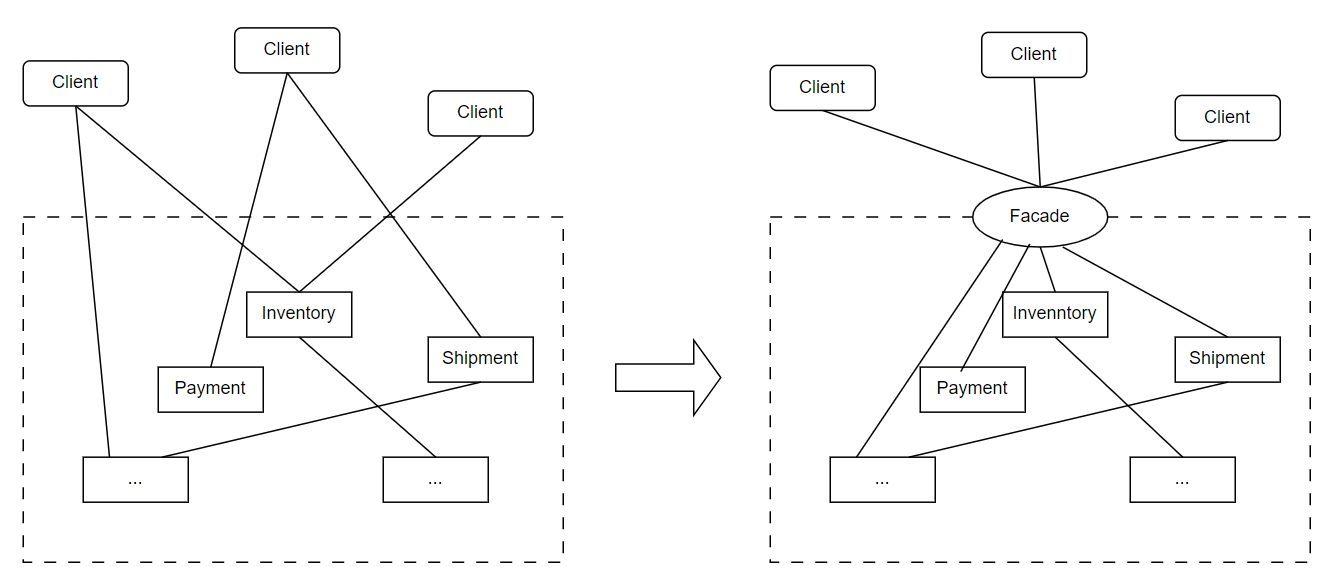Java设计模式之外观模式Facade
外观模式(Facade Pattern)隐藏系统的复杂性,并向客户端提供了一个通用的访问接口。 这种类型的设计模式属于结构型模式,它向现有的系统添加一个接口,来隐藏系统的复杂性,如下图。

外观模式优点也很明显,它使得Client和系统之间的耦合松散,为Client屏蔽了系统的各个子组件,减少了Client访问系统的复杂性。
外观模式和代理模式有一定相似性,都是对外隐藏内部的细节,不同之处在于代理和它代理的对象使用统一接口,而外观模式因为隐藏的是多个子系统多个不同的功能,所以其并不使用统一接口。
举个例子。假设用户进行电视购物,完整购物流程包含查询库存,进行支付,送货等等,如果购物时分别与这些子系统打交道,那么整个系统的复杂性必然会上升,我们使用Facade模式来简化这个处理过程。
- Inventory/Payment/Shipment: 分别代表各个子系统,提供查询库存,进行支付,送货等等服务
- TVShopping: Facade类,包含上面说的各个子系统的对象,对外提供统一方法
- FacadeDemo: 测试类
public class Inventory {
public boolean isStockEnough(int buyCount) {
boolean hasStock = buyCount < 1000;
if(hasStock) System.out.println("Inventory checked!");
else System.out.println("No enough inventory!");
return hasStock;
}
}
public class Payment {
public void pay() {
System.out.println("Payment is done!");
}
}
public class Shipment {
public void startShipment(){
System.out.println("Start shipping ...");
}
public void endShipment(){
System.out.println("End shipment!");
}
}
public class TVShopping {
private final Inventory inventory = new Inventory();
private final Payment payment = new Payment();
private final Shipment shipment = new Shipment();
public boolean hasStock(int buyCount){
return inventory.isStockEnough(buyCount);
}
public void userPay(){
payment.pay();
}
public void shipmentProcess(){
shipment.startShipment();
shipment.endShipment();
}
}
public class FacadeDemo {
public static void main(String[] args) {
// So, the client just use the TVShopping as Facade
// and don't need to touch the sub-systems
TVShopping tvShopping = new TVShopping();
if (tvShopping.hasStock(15)) {
tvShopping.userPay();
tvShopping.shipmentProcess();
}
}
}测试后输出:
Inventory checked!
Payment is done!
Start shipping ...
End shipment!